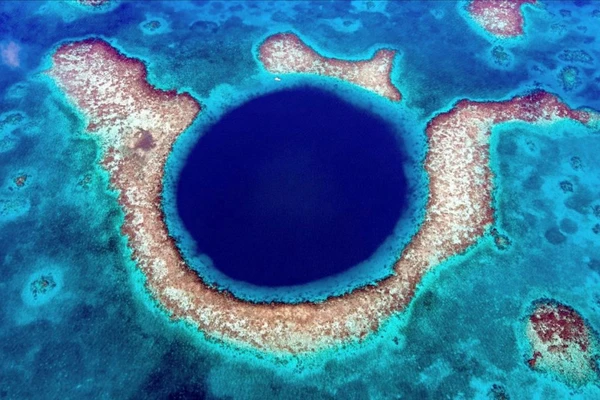Researchers have discovered the world’s deepest blue hole, called Taam Ja’ Blue Hole (TJBH), in Mexico.
About Taam Ja’ Blue Hole (TJBH):
- It is located in Chetumal Bay on the Yucatan Peninsula, southeast Mexico.
- It has a staggering depth of 1,380 feet (420 meters), making it the deepest blue hole recorded.
- Initially identified in 2021 with an estimated depth of 900 feet, it now holds the world record.
- TJBH surpasses the previous record holder, Sansha Yongle Blue Hole, by 480 feet.
- The structure of TJBH is circular with steep conical sides, featuring biofilms, limestone, and gypsum ledges.
- Its geology includes discontinuous terraces and steep vertical slopes.
- The environment within the blue hole shows variable salinity and temperature.
About Blue Holes:
- Blue holes are underwater sinkholes or vertical caves located in coastal karst regions.
- They are formed by the dissolution of limestone or carbonate rocks by acidic groundwater.
- Ocean water seeps through cracks, dissolving minerals which contribute to the formation of sinkholes.
- Over time, these formations can grow significantly large due to continuous erosion and dissolution processes.
- Examples of other notable blue holes include:
- Great Blue Hole, Belize (410 ft)
- Dean’s Blue Hole, Bahamas (663 ft)
- Red Sea Blue Hole, Egypt (328 ft)
- Dragon Hole, South China Sea
Ref: Source
| UPSC IAS Preparation Resources | |
| Current Affairs Analysis | Topperspedia |
| GS Shots | Simply Explained |
| Daily Flash Cards | Daily Quiz |



